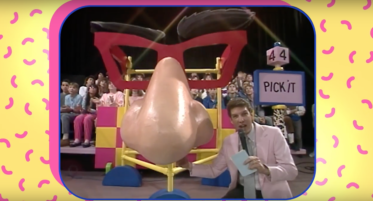Prompt Images
Last week, my 5th and 6th grade boys came home from school terrified. They told me all about the Momo Challenge, in which a “ghost” contacted young users on WhatsApp or YouTube and compelled them to do acts of self-harm, lest she haunt or kill them. I threw snacks at them—because that’s always the best way to manage pre-teens after school—and then I slapped down their story as fast as you can say bullshit with an easy Snopes lookup. They felt a little embarrassed, but also relieved, that the whole thing is a story of a rumor of a story of an urban legend that has no actual basis.
But Momo’s stickiness has surprised me.
Two nights after I learned about it, I woke up needing to go to the bathroom (shut up), and I stayed frozen in bed for a few moments. I was certain that this Momo figure was waiting under the bed, ready to grab my ankle as soon as I stepped down. I did what I normally do when I’m afraid in the middle of the night—I woke up my wife to get her out of bed first to make sure the coast was clear. All was well. But why was I so afraid?
Later that day, while we drove home from an Ash Wednesday service (“Happy Ash Wednesday, everyone—we’re all gonna die!”), our kids spotted a license plate that read, “MOMO,” and pandemonium ensued. They began flailing and screaming, well past the point of a good laugh. They voiced their certainty that Momo was driving the vehicle (Really? A Dodge Grand Caravan, guys?), and that it was going to our neighborhood, to our home, to inflict great cruelty and pain.
All this came after I deconstructed and demystified the whole damn thing. What the actual hell is going on?
Why has this Momo rumor been the most popular thing on school playgrounds since flossing, to the point that it has prompted national news stories?
And is there some connection between the suicide threat of Momo and the wide popularity of the movie Bird Box, which depicts widespread suicidal contagion?
Perhaps the Momo craze causes such alarm in me because it represents an inescapable threat from the inside.
If I am my own threat, where can I go for safety? Maybe it’s similar to the old urban legend of the threatening phone call: “The call is coming from inside the house!” Evil inside is devilish evil for sure. But there’s something larger than my own fear of death charading as an endless existential crisis. Both this Momo phenomenon and Bird Box play off a couple important things about how humans are wired.
First, suicide is not only a devastating individual act of self-harm; it’s also a profoundly social problem.
Humans are mimetic: we tend to desire and do what other people desire and do. And so when a person commits suicide, the psychological threat to other people is real. Data suggest that suicides can happen in clusters, and there can be a spike in the suicide rate shortly after someone famous commits the act. Fortunately, there are now media guidelines for reporting on suicide that help stop—and even reverse—these trends.
Second, Momo and Bird Box dramatize how what we see may harm us.
This is ancient wisdom, and it’s perhaps more important than ever, given the all-present internet along with its many bogeymen and bedeviling dark corners. The images and memes are presented to us on the screens all around us, everywhere we go. If these things we see may harm us, how do we escape when the images are everywhere?
I thought back to the snacks I had tossed to my boys before our conversation about Momo. Perhaps we can start with changing our consumption habits. Snacks are great so long as they don’t ruin our dinner, our health, our relationships, or our ability to sleep at night. We are what we eat. And there’s a solution so simple, so tried and true that it feels almost too obvious: be careful what you consume.



